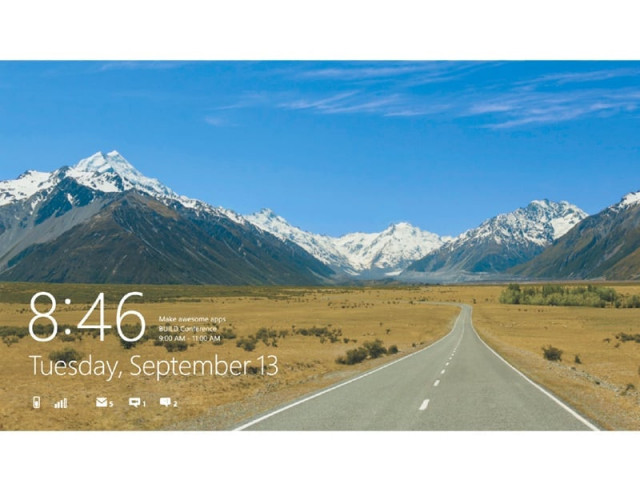Geek Guide: Get all set for Windows 8!
Windows is all set to launch its new version — Windows 8 — to the public in February 2012.

Windows is all set to launch its new version — Windows 8 — to the public in February 2012. The operating system’s new UI (User Interface) called Metro caters the new generation of touch-sensitive hardware. It’s fast, fluid and dynamic while keeping the power, flexibility and connectivity intact. Windows 8 is a one for all operating system i.e. it is being designed to run on Tablets, ARM PCs and Desktop PCs.
Here are some features you can look forward to.
Windows 8 DP User Interface design
The best way to describe Windows 8 is that it essentially combines the Metro UI of Windows Phone 7 (WP7) and the desktop architecture of Windows 7. The Windows home screen is initially hidden behind a lock screen virtually identical to Windows Phone 7’s. After the boot is complete, the welcome screen shows icons for quick review of battery level, internet connectivity and email messages.
Start menu
The Start menu has been completely redesigned and thus it might be difficult for new users to adapt to it. Inside the menu, is the Metro start screen, comprising a grid of live application tiles — almost identical to those in WP7. Two sizes of tiles serve as both application launch shortcuts and notification areas that can be populated with notifications, graphics, and other status indicators.
The interface is designed to perform and behave in the same way across multi-touch, active digitiser, keyboard and mouse combinations.
Windows explorer
Besides this, there are improvements to UI on the desktop side too. A new Ribbon interface is introduced for Windows explorer that provides quick access to actions and settings available. Improvements to the file dialogues (copy, move, delete) add a graph which displays the speed of operation and an option to pause file copy or move operation.
Task manager
Windows 8 includes a complete new task manager, making it easier to manage processes and to keep an eye on resource usage with built in startup control. With the new startup tab in task manager, a user can check which programs are starting with Windows and its impact on Windows 8 loading performance. It also enables a user to disable selective programs.
Performance in a nutshell
Fundamentally Microsoft wants to keep the system requirements for Windows 8 the same as Windows 7, which means it needs to run (with varying definitions of “smoothly”) on a 1GHz CPU paired with 1GB of RAM and a DX9 class GPU (Graphic processing unit) and the recommended 16GB of free hard drive space.
Besides improvements to the UI, Microsoft has essentially focused on enhancing the performance in its new version of Windows. The first major improvement is the huge boost in speed — it only takes about 7-8 seconds to boot your system.
The memory usage print in Windows 8 is reduced as compared to Windows 7 that lead to efficient usage of memory. Application performance of Windows 8 is better than that of Windows 7. The new UI includes Directx 11.1, which basically enhances the gaming experience.
Published in The Express Tribune, December 17th, 2011.



















COMMENTS
Comments are moderated and generally will be posted if they are on-topic and not abusive.
For more information, please see our Comments FAQ